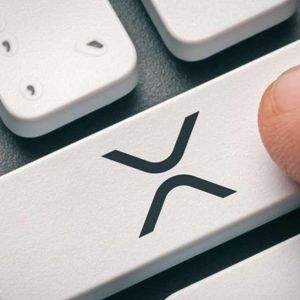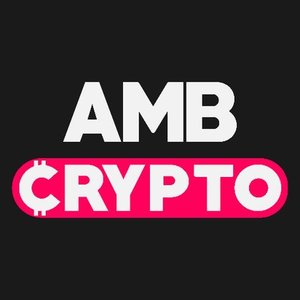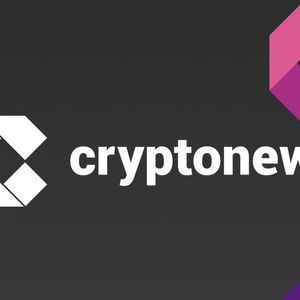In a world where cross-border payments remain notoriously slow, expensive, and inefficient, Ripple is positioning itself as a game-changing force with its digital asset, XRP. A recent discussion on CNBC featuring Ripple CEO Brad Garlinghouse, highlighted by crypto analyst @stedas on X, underscores the scale of the problem Ripple is tackling — and the efficiency XRP offers as a solution. At the heart of the issue is a staggering $27 trillion globally tied up in nostro/vostro accounts, which are essentially pre-funded bank accounts held in foreign jurisdictions to facilitate international payments. These idle funds, required to ensure liquidity between correspondent banks, reflect a system designed decades ago, long before the rise of blockchain technology and digital assets. #XRP is solving a global payments problem: $27 trillion of money is parked in nostro / vostro accounts globally. pic.twitter.com/1b0M7EDDJU — XRP_Cro AI / Gaming / DePIN (@stedas) May 28, 2025 Understanding the Global Liquidity Problem Traditional cross-border payment systems depend on nostro/vostro accounts, as banks must maintain funds in various currencies to ensure timely transaction settlements. This system locks up enormous amounts of capital, creating inefficiency not only in the banking sector but across the global economy. According to Garlinghouse, Ripple’s mission is to unlock that trapped capital by offering a modern, blockchain-based alternative. Instead of requiring banks to hold massive reserves, RippleNet — Ripple’s enterprise blockchain network — allows financial institutions to move money across borders in seconds, not days. XRP, as the native digital asset of the XRP Ledger, plays a key role here. As Garlinghouse explained, XRP acts as a bridge currency, providing instant liquidity between two fiat currencies . This innovation effectively eliminates the need for pre-funded accounts, thereby freeing up billions of dollars that can be redeployed more productively across economies. XRP’s Speed and Efficiency at the Forefront What sets XRP apart is its unmatched efficiency . According to Garlinghouse, XRP transactions settle in about three seconds, making it one of the fastest and most scalable assets for payment settlement. In contrast, traditional cross-border transactions typically require 2-5 business days to settle, varying by corridor and the number of intermediary banks. The XRP Ledger is designed for high throughput, low cost, and minimal energy consumption, making it not only faster but also far more sustainable than proof-of-work-based networks like Bitcoin. Ripple’s technological advantage lies in this combination of speed, cost, and eco-friendliness — a compelling package for financial institutions seeking to modernize their payment infrastructure. Ripple’s Broader Vision for Global Finance Ripple’s ambitions are beyond just moving money faster. The company envisions a reimagined financial system where value moves as freely and efficiently as information does over the internet. By removing the friction inherent in the current system, Ripple is opening the door for new use cases in remittances, global trade, and even central bank digital currencies (CBDCs). We are on twitter, follow us to connect with us :- @TimesTabloid1 — TimesTabloid (@TimesTabloid1) July 15, 2023 Already, Ripple has established partnerships with hundreds of financial institutions worldwide, including major banks, payment providers, and fintech companies. RippleNet’s On-Demand Liquidity service, powered by XRP, is gaining traction in major corridors like the Philippines, Mexico, and Brazil, enabling instant settlements. These real-world deployments are proving that blockchain solutions can deliver tangible benefits on a global scale. Regulatory Clarity and the Road Ahead Despite the progress, Ripple’s journey hasn’t been without challenges, particularly in the regulatory sphere. The long-running legal battle with the U.S. Securities and Exchange Commission (SEC), which revolves around whether XRP should be classified as a security, has cast a shadow over the company’s U.S. operations. However, international demand for Ripple’s solutions remains strong, and recent legal developments have bolstered the company’s position. Garlinghouse and the Ripple leadership team continue to advocate for clear regulatory frameworks that foster innovation while protecting consumers. As regulatory landscapes evolve globally, Ripple appears well-positioned to expand its influence, particularly in regions with forward-looking digital asset policies. Ripple’s use of XRP to settle liquidity needs between banks offers a radical solution to one of the financial world’s most entrenched inefficiencies. As highlighted by @stedas, the $27 trillion currently locked in nostro/vostro accounts represents both a challenge and a massive opportunity. By leveraging XRP’s speed, efficiency, and scalability, Ripple is not only helping banks free up capital but also reshaping the very foundations of global finance. With the momentum of real-world adoption and a clear focus on solving genuine problems, Ripple’s vision of a seamlessly connected, instant-value-moving world feels increasingly within reach. Disclaimer : This content is meant to inform and should not be considered financial advice. The views expressed in this article may include the author’s personal opinions and do not represent Times Tabloid’s opinion. Readers are urged to do in-depth research before making any investment decisions. Any action taken by the reader is strictly at their own risk. Times Tabloid is not responsible for any financial losses. Follow us on Twitter , Facebook , Telegram , and Google News The post Ripple CEO: XRP Settles Liquidity Needs Between Banks Globally appeared first on Times Tabloid .


















